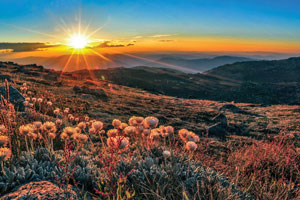
Kosciuszko: It’s a park, not a paddock
It’s time to overturn the Berejiklian Government’s decision entrenching destructive feral horses in Kosciuszko National Park. Are you in?

It’s time to overturn the Berejiklian Government’s decision entrenching destructive feral horses in Kosciuszko National Park. Are you in?

A million or more feral deer roam Victoria and yet the government’s attempt to strengthen its deer management strategy lacks ambition and relies primarily on existing programs and control by recreational hunters. Have your say by 29 October 2018.

A band of avid bushwalkers want you to join them on a mission to Save Kosci from feral horses and walk from Sydney to the top of Mt Kosciuszko. Are you in?

Given the potential of invasive ants to transform ecosystems and send native species extinct, a national strategy to deal with the threat is vital.

A review has been launched into how Australia manages its environmental biosecurity risks. The deadline for submissions is 15 October 2018.

It’s the system that protects Australia from invasive plants, animals and diseases. And yet a simple statement that explains the system from the perspective of all Australians has remained out of reach, until now.
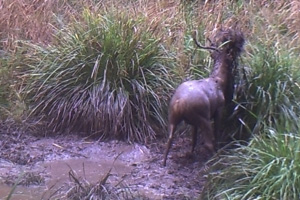
The Australian Senate has announced an inquiry into the growing impacts from feral deer, pigs and goats and to prevent problems worsening for the natural environment, community and farmers.

The decision to create an office of environmental biosecurity protection is big step forward in protecting Australia’s environment from dangerous new invasive species.

Our investigation into feral deer vehicle collisions in the Illawarra region south of Sydney reveals the animals are putting drivers at risk of costly crashes and even death.
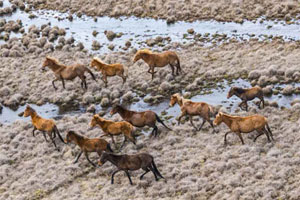
The NSW government’s approach to feral horses throws evidence, political convention and facts out the window in favour of appeasing a noisy minority.
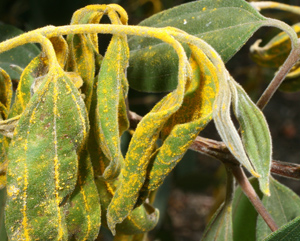
An action plan is being developed for myrtle rust, the plant-killing disease that poses a serious and urgent threat to Australia’s native plants and animals.
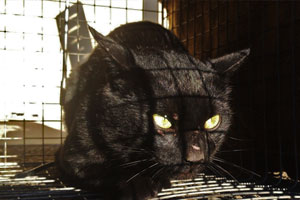
Australia’s Threatened Species Commissioner wants to know what role you or your community are playing in tackling feral cats.

Our first yellow crazy ant field day at Billabong Sanctuary near Townsville proved a huge success.

A new book is helping to give land managers the tools they need to convince others of the urgent need for greater investment in battling invasive species.

If allowed to stand the decision to ‘protect’ feral horses in Kosciuszko National Park will inflict increasing damage on this fragile landscape.

It’s time to overturn the Berejiklian Government’s decision entrenching destructive feral horses in Kosciuszko National Park. Are you in?

A million or more feral deer roam Victoria and yet the government’s attempt to strengthen its deer management strategy lacks ambition and relies primarily on existing programs and control by recreational hunters. Have your say by 29 October 2018.

A band of avid bushwalkers want you to join them on a mission to Save Kosci from feral horses and walk from Sydney to the top of Mt Kosciuszko. Are you in?

Given the potential of invasive ants to transform ecosystems and send native species extinct, a national strategy to deal with the threat is vital.

A review has been launched into how Australia manages its environmental biosecurity risks. The deadline for submissions is 15 October 2018.

It’s the system that protects Australia from invasive plants, animals and diseases. And yet a simple statement that explains the system from the perspective of all Australians has remained out of reach, until now.

The Australian Senate has announced an inquiry into the growing impacts from feral deer, pigs and goats and to prevent problems worsening for the natural environment, community and farmers.

The decision to create an office of environmental biosecurity protection is big step forward in protecting Australia’s environment from dangerous new invasive species.

Our investigation into feral deer vehicle collisions in the Illawarra region south of Sydney reveals the animals are putting drivers at risk of costly crashes and even death.

The NSW government’s approach to feral horses throws evidence, political convention and facts out the window in favour of appeasing a noisy minority.

An action plan is being developed for myrtle rust, the plant-killing disease that poses a serious and urgent threat to Australia’s native plants and animals.

Australia’s Threatened Species Commissioner wants to know what role you or your community are playing in tackling feral cats.

Our first yellow crazy ant field day at Billabong Sanctuary near Townsville proved a huge success.

A new book is helping to give land managers the tools they need to convince others of the urgent need for greater investment in battling invasive species.

If allowed to stand the decision to ‘protect’ feral horses in Kosciuszko National Park will inflict increasing damage on this fragile landscape.

It’s time to overturn the Berejiklian Government’s decision entrenching destructive feral horses in Kosciuszko National Park. Are you in?

A million or more feral deer roam Victoria and yet the government’s attempt to strengthen its deer management strategy lacks ambition and relies primarily on existing programs and control by recreational hunters. Have your say by 29 October 2018.

A band of avid bushwalkers want you to join them on a mission to Save Kosci from feral horses and walk from Sydney to the top of Mt Kosciuszko. Are you in?

Given the potential of invasive ants to transform ecosystems and send native species extinct, a national strategy to deal with the threat is vital.

A review has been launched into how Australia manages its environmental biosecurity risks. The deadline for submissions is 15 October 2018.

It’s the system that protects Australia from invasive plants, animals and diseases. And yet a simple statement that explains the system from the perspective of all Australians has remained out of reach, until now.

The Australian Senate has announced an inquiry into the growing impacts from feral deer, pigs and goats and to prevent problems worsening for the natural environment, community and farmers.

The decision to create an office of environmental biosecurity protection is big step forward in protecting Australia’s environment from dangerous new invasive species.

Our investigation into feral deer vehicle collisions in the Illawarra region south of Sydney reveals the animals are putting drivers at risk of costly crashes and even death.

The NSW government’s approach to feral horses throws evidence, political convention and facts out the window in favour of appeasing a noisy minority.

An action plan is being developed for myrtle rust, the plant-killing disease that poses a serious and urgent threat to Australia’s native plants and animals.

Australia’s Threatened Species Commissioner wants to know what role you or your community are playing in tackling feral cats.

Our first yellow crazy ant field day at Billabong Sanctuary near Townsville proved a huge success.

A new book is helping to give land managers the tools they need to convince others of the urgent need for greater investment in battling invasive species.

If allowed to stand the decision to ‘protect’ feral horses in Kosciuszko National Park will inflict increasing damage on this fragile landscape.
Get our blog the Feral Herald delivered to your inbox.

The Invasive Species Council was formed in 2002 to seek stronger laws, policies and programs to protect nature from harmful pests, weeds and diseases.
The Invasive Species Council acknowledges the Traditional Custodians throughout Australia and their connections to land and sea. We pay our respect to their Elders past and present and extend that respect to all Aboriginal and Torres Strait Islander peoples today.
Our protected areas are being trashed, trampled, choked and polluted by an onslaught of invaders. Invasive species are already the overwhelming driver of our animal extinction rate, and are expected to cause 75 of the next 100 extinctions.
But you can help to turn this around and create a wildlife revival in Australia.
From numbats to night parrots, a tax-deductible donation today can help defend our wildlife against the threat of invasive weeds, predators, and diseases.
As the only national advocacy environment group dedicated to stopping this mega threat, your gift will make a big difference.
A silent crisis is unfolding across Australia. Every year, billions of native animals are hunted and killed by cats and foxes. Fire ants continue to spread and threaten human health. And the deadly strain of bird flu looms on the horizon. Your donation today will be used to put the invasive species threat in the media, make invasive species a government priority, ensure governments take rapid action to protect nature and our remarkable native wildlife from invasives-led extinction, death and destruction.
If you are having trouble submitting a form, please read this guide.
Please fill out the following form and one of our team will be in contact to assist as soon as possible. Please make sure to include any helpful information, such as the device you were using (computer, tablet or mobile phone) and if known, your browser (Mozilla Firefox, Chrome, Safari etc)
"*" indicates required fields
Dear Project Team,
[YOUR PERSONALISED MESSAGE WILL APPEAR HERE.]
I support the amendment to the Kosciuszko National Park Wild Horse Heritage Management Plan to allow our incredible National Parks staff to use aerial shooting as one method to rapidly reduce feral horse numbers. I want to see feral horse numbers urgently reduced in order to save the national park and our native wildlife that live there.
The current approach is not solving the problem. Feral horse numbers have rapidly increased in Kosciuszko National Park to around 18,000, a 30% jump in just the past 2 years. With the population so high, thousands of feral horses need to be removed annually to reduce numbers and stop our National Park becoming a horse paddock. Aerial shooting, undertaken humanely and safely by professionals using standard protocols, is the only way this can happen.
The government’s own management plan for feral horses states that ‘if undertaken in accordance with best practice, aerial shooting can have the lowest negative animal welfare impacts of all lethal control methods’.
This humane and effective practice is already used across Australia to manage hundreds of thousands of feral animals like horses, deer, pigs, and goats.
Trapping and rehoming of feral horses has been used in Kosciuszko National Park for well over a decade but has consistently failed to reduce the population, has delayed meaningful action and is expensive. There are too many feral horses in the Alps and not enough demand for rehoming for it to be relied upon for the reduction of the population.
Fertility control as a management tool is only effective for a small, geographically isolated, and accessible population of feral horses where the management outcome sought is to maintain the population at its current size. It is not a viable option to reduce the large and growing feral horse population in the vast and rugged terrain of Kosciuszko National Park.
Feral horses are trashing and trampling our sensitive alpine ecosystems and streams, causing the decline and extinction of native animals. The federal government’s Threatened Species Scientific Committee has stated that feral horses ‘may be the crucial factor that causes final extinction’ for 12 alpine species.
I recognise the sad reality that urgent and humane measures are necessary to urgently remove the horses or they will destroy the Snowies and the native wildlife that call the mountains home. I support a healthy national park where native species like the Corroboree Frog and Mountain Pygmy Possum can thrive.
Dear Project Team,
[YOUR PERSONALISED MESSAGE WILL APPEAR HERE.]
I support the amendment to the Kosciuszko National Park Wild Horse Heritage Management Plan to allow our incredible National Parks staff to use aerial shooting as one method to rapidly reduce feral horse numbers. I want to see feral horse numbers urgently reduced in order to save the national park and our native wildlife that live there.
The current approach is not solving the problem. Feral horse numbers have rapidly increased in Kosciuszko National Park to around 18,000, a 30% jump in just the past 2 years. With the population so high, thousands of feral horses need to be removed annually to reduce numbers and stop our National Park becoming a horse paddock. Aerial shooting, undertaken humanely and safely by professionals using standard protocols, is the only way this can happen.
The government’s own management plan for feral horses states that ‘if undertaken in accordance with best practice, aerial shooting can have the lowest negative animal welfare impacts of all lethal control methods’.
This humane and effective practice is already used across Australia to manage hundreds of thousands of feral animals like horses, deer, pigs, and goats.
Trapping and rehoming of feral horses has been used in Kosciuszko National Park for well over a decade but has consistently failed to reduce the population, has delayed meaningful action and is expensive. There are too many feral horses in the Alps and not enough demand for rehoming for it to be relied upon for the reduction of the population.
Fertility control as a management tool is only effective for a small, geographically isolated, and accessible population of feral horses where the management outcome sought is to maintain the population at its current size. It is not a viable option to reduce the large and growing feral horse population in the vast and rugged terrain of Kosciuszko National Park.
Feral horses are trashing and trampling our sensitive alpine ecosystems and streams, causing the decline and extinction of native animals. The federal government’s Threatened Species Scientific Committee has stated that feral horses ‘may be the crucial factor that causes final extinction’ for 12 alpine species.
I recognise the sad reality that urgent and humane measures are necessary to urgently remove the horses or they will destroy the Snowies and the native wildlife that call the mountains home. I support a healthy national park where native species like the Corroboree Frog and Mountain Pygmy Possum can thrive.